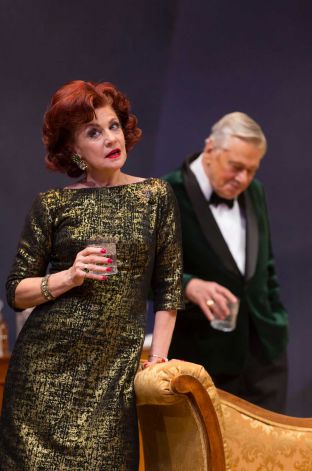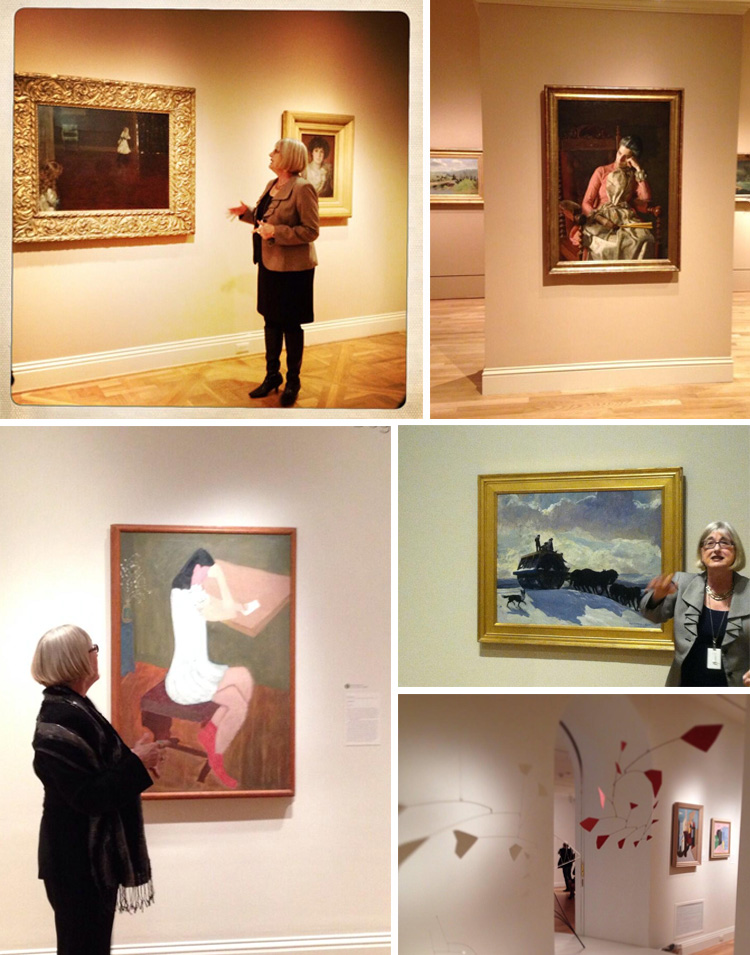In today’s Wall Street Journal drama column I review Westport Country Playhouse’s revival of Noël Coward’s A Song at Twilight and Second Stage’s revival of Jon Robin Baitz’s The Substance of Fire. Here’s an excerpt.
* * *
Rarely seen in this country since it ran on Broadway in 1974, “A Song at Twilight” was produced earlier this year on both coasts, at Hartford Stage and Pasadena Playhouse. The Hartford Stage version, directed by Mark Lamos, has now transferred to another Connecticut theater, Mr. Lamos’ own Westport Country Playhouse. Anyone who supposes that changing times have turned “A Song at Twilight” into a hoary period piece is in for a big surprise. Coward called it “far and away the best-constructed play I have ever written.” That overstates the case, but it’s definitely one of his best.
 Explicitly based on the life of Somerset Maugham, “A Song at Twilight” is a portrait of Hugo Latymer (Brian Murray), a venerable novelist and sometime playwright who married his secretary (Mia Dillon) in middle age and now is wreathed in irascible respectability. Enter Carlotta (Gordana Rashovich), an angry ex-girlfriend who comes bearing a purseful of letters that Latymer sent in his indiscreet youth to the alcoholic male lover whom he dumped in order to live a straight life….
Explicitly based on the life of Somerset Maugham, “A Song at Twilight” is a portrait of Hugo Latymer (Brian Murray), a venerable novelist and sometime playwright who married his secretary (Mia Dillon) in middle age and now is wreathed in irascible respectability. Enter Carlotta (Gordana Rashovich), an angry ex-girlfriend who comes bearing a purseful of letters that Latymer sent in his indiscreet youth to the alcoholic male lover whom he dumped in order to live a straight life….
I last saw “A Song at Twilight” at the Berkshire Theater Festival in a 2008 production by Vivian Matalon, who had previously directed Coward himself in the London premiere. While that revival, which also featured Ms. Dillon, was impressive, it was accompanied by a Coward-penned curtain-raiser, a satirical playlet called “Come into the Garden, Maud” that was amusing but superfluous. “A Song at Twilight,” which runs for 90 tightly written minutes, is far more effective when presented on its own, and Mr. Lamos’ cast acts it with uncommon delicacy and poise….
Like “A Song at Twilight,” “The Substance of Fire,” directed by Trip Cullman, revolves around a cranky old litterateur, but the resemblance stops there. In “The Substance of Fire,” the irascible gentleman in question, Isaac Geldhart (John Noble), is a Holocaust survivor who escaped to America, where he started a highbrow publishing house that is now in imminent danger of bankruptcy, much to the distress of his three children (Daniel Eric Gold, Carter Hudson and Halley Feiffer), who wrest control of the stock from their father at the end of the first act.
Up to that point, “The Substance of Fire” is your standard feuding-family play, tightly packed with glib retorts, and at intermission I expected to pan it. But things get vastly more interesting when Isaac, who has retreated to his book-lined apartment and is showing signs of what appears to be fast-encroaching senility, is visited by a briskly officious social worker (Charlayne Woodard) whose task is to determine whether or not he is competent to look after himself. They, too, spend the second act sparring, but in a wholly original and absorbing way…
* * *
Read the whole thing here.
Archives for May 9, 2014
Refreshing a great museum
I recently visited an important Phillips Collection exhibition, Made in the U.S.A., about which I hold forth in today’s Wall Street Journal “Sightings” column. Here’s an excerpt.
* * *
When art-loving tourists think of Washington’s Phillips Collection, they usually think of Renoir’s “Luncheon of the Boating Party,” the museum’s celebrated centerpiece, or its spectacular holdings of post-Impressionist paintings by Bonnard, Cézanne and Vuillard. But Duncan Phillips, who in 1921 turned his private collection into America’s very first museum of modern art, started the Phillips (as everyone now calls it) to show his fellow countrymen that the American art he loved was good enough to stand up to direct comparison to the best work of Europe’s then-contemporary masters….
 Of the 2,000 works of art in the collection at the time of his death in 1966, fully 1,400 were by American artists, and it was his custom (as it still is at the Phillips) to hang their work in close proximity to European paintings. Yet it’s been nearly 40 years since his museum last mounted a large-scale exhibition that sought to tell the story of American art as seen through the eye of its founder. Now, with “Made in the U.S.A.: American Masters from the Phillips Collection, 1850-1970,” on display through Aug. 31, the Phillips has triumphantly reasserted the validity of its original mission. By simultaneously exhibiting some 200-odd paintings, works on paper, photographs and sculptures by such artists as Alexander Calder, Stuart Davis, Richard Diebenkorn, Thomas Eakins, Helen Frankenthaler, Marsden Hartley, Winslow Homer, Edward Hopper, Willem de Kooning, Jacob Lawrence, Joan Mitchell, Alfred Stieglitz and John Twachtman, the Phillips leaves no doubt that long before the postwar advent of the New York School of American painting, the U.S. had come into its own as a font of world-class art.
Of the 2,000 works of art in the collection at the time of his death in 1966, fully 1,400 were by American artists, and it was his custom (as it still is at the Phillips) to hang their work in close proximity to European paintings. Yet it’s been nearly 40 years since his museum last mounted a large-scale exhibition that sought to tell the story of American art as seen through the eye of its founder. Now, with “Made in the U.S.A.: American Masters from the Phillips Collection, 1850-1970,” on display through Aug. 31, the Phillips has triumphantly reasserted the validity of its original mission. By simultaneously exhibiting some 200-odd paintings, works on paper, photographs and sculptures by such artists as Alexander Calder, Stuart Davis, Richard Diebenkorn, Thomas Eakins, Helen Frankenthaler, Marsden Hartley, Winslow Homer, Edward Hopper, Willem de Kooning, Jacob Lawrence, Joan Mitchell, Alfred Stieglitz and John Twachtman, the Phillips leaves no doubt that long before the postwar advent of the New York School of American painting, the U.S. had come into its own as a font of world-class art.
Among the plethora of first impressions evoked by the show, two in particular stand out. The first is that it is an eloquent tribute to one man’s imagination. As befits a collection assembled by an individual, it’s taste-driven, not theory-driven–and Duncan Phillips’ taste was unusually catholic….
Beyond that, though, “Made in the U.S.A.” is a model of how a museum of a certain age can renew itself–and thrill its visitors–by making bold use of its permanent collection….
* * *
Read the whole thing here.
Almanac: Somerset Maugham on the artist’s life
“The artist produces for the liberation of his soul. It is his nature to create as it is the nature of water to run down the hill.”
W. Somerset Maugham, The Summing Up
